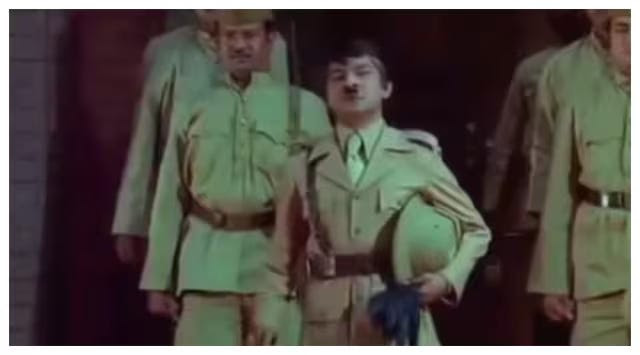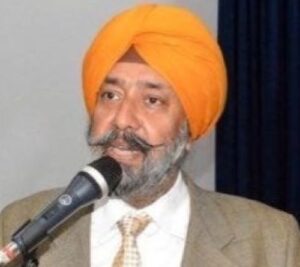 On the auspicious evening of Diwali, October 20, 2025, Indian cinema lost one of its most cherished gems. Govardhan Asrani, known simply and affectionately as Asrani to millions, passed away at the age of 84 in Mumbai after a prolonged illness. Just hours before his death, the veteran actor had shared Diwali greetings on his social media—a poignant final message to the fans who had laughed with him for over five decades.
On the auspicious evening of Diwali, October 20, 2025, Indian cinema lost one of its most cherished gems. Govardhan Asrani, known simply and affectionately as Asrani to millions, passed away at the age of 84 in Mumbai after a prolonged illness. Just hours before his death, the veteran actor had shared Diwali greetings on his social media—a poignant final message to the fans who had laughed with him for over five decades.
From Humble Beginnings to Cinematic Immortality
Born on January 1, 1941, in Jaipur, Rajasthan, to a Sindhi family that had migrated during Partition, young Asrani’s dreams extended far beyond his father’s modest carpet shop. Despite being weak in mathematics and uninterested in business, he found his calling in performance, working as a voice artist at All India Radio while pursuing his education.
His breakthrough came when he joined the Film and Television Institute of India (FTII), Pune, in 1964 as part of its pioneering first batch. Despite graduating with professional training, the industry initially dismissed him, mocking that “acting doesn’t require certificates”. This rejection forced him to return to FTII—not as a student, but as an instructor, where he taught future stars including Jaya Bachchan, Shabana Azmi, and Shatrughan Sinha.
In a remarkable intervention, when Asrani and his batchmates complained to then-Information Minister Indira Gandhi about unemployment despite their qualifications, she personally visited Mumbai and instructed producers to give trained actors opportunities. This opened doors for Asrani’s eventual ascent in Hindi cinema.
The Sholay Phenomenon: Hitler Meets Comedy
While Asrani appeared in over 350 films across five decades, one role defined his legacy—the jailer in Sholay (1975). Writers Salim-Javed envisioned a character inspired by Adolf Hitler’s authoritarian persona translated into comedy. They handed Asrani a book on World War II and asked him to study the dictator’s mannerisms.

Asrani traveled to FTII Pune to listen to Hitler’s recorded speeches, analyzing the powerful vocal delivery that mobilized armies. The result was pure genius: his character’s stiff walk, distinctive body language, and the immortal dialogue “Hum angrezon ke zamane ke jailer hain” (I am a jailer from the British era) became a cultural phenomenon. Even fifty years later, that brief scene remains a masterclass in comic timing and character building.
The Golden Era: Comedy’s Reigning King
The 1970s and 1980s marked Asrani’s peak, with over 100 films each decade. His 25-film collaboration with Rajesh Khanna produced classics like Bawarchi, Namak Haraam, Prem Nagar, and Abhimaan. His performances in Hrishikesh Mukherjee’s comedies—Chupke Chupke, Chhoti Si Baat, and Abhimaan—showcased his ability to blend seamlessly into ensemble casts while leaving indelible impressions.
Asrani won two Filmfare Awards for Best Comedian: for Aaj Ki Taaza Khabar (1974) and Balika Badhu (1977). These accolades recognized not just his comic timing but his versatility as a performer who could evoke laughter while maintaining emotional authenticity.
The Multifaceted Artist
Beyond comedy, Asrani directed six films between 1974 and 1997, including Chala Murari Hero Banne (1977), where he also starred as the lead. In Gujarati cinema, he enjoyed parallel stardom, and his 1974 song “Hu Amdavad No Rikshawalo” (sung by Kishore Kumar) became an anthem for Ahmedabad. The song was recreated in 2021 with Asrani appearing alongside modern Gujarati stars, testament to its enduring popularity.
The Priyadarshan Renaissance
When many actors of his generation faded into retirement, Asrani experienced a remarkable revival in the 2000s through his collaboration with director Priyadarshan. In films like Hera Pheri (2000), Garam Masala (2005), Malamaal Weekly (2006), Bhagam Bhag (2006), Bhool Bhulaiyaa (2007), and De Dana Dan (2009), he introduced himself to a new generation of filmgoers.
These roles, though supporting, were essential to the films’ comedic architecture. Working with contemporary stars like Akshay Kumar, Paresh Rawal, and Govinda, Asrani proved his ability to adapt to changing cinematic sensibilities while maintaining his distinctive style. His last significant appearances included Bunty Aur Babli 2 (2021), Yamla Pagla Deewana Phir Se (2018), and Dream Girl 2 (2023).
The Man Behind the Laughter
Asrani married actress Manju Bansal, with whom he fell in love while working on Aaj Ki Taaza Khabar and Namak Haraam in the early 1970s. Their on-screen chemistry translated into real-life romance, and the couple acted together in numerous films including Tapasya, Chandi Sona, and Hum Nahin Sudhrenge—a home production directed by Asrani in 1980.
Despite his comic persona, Asrani maintained that “comedians being sad people is a wrong notion. I am an observer of life and that’s what has helped my art”. This careful attention to human behavior fueled his performances with authenticity that transcended mere joke-telling.
Final Curtain Call
Asrani had been hospitalized for four days at Arogya Nidhi Hospital in Juhu due to breathing issues before passing away at 3 PM on October 20, 2025. His last rites were performed at Santacruz Crematorium at 8 PM the same day, attended by close family. His manager confirmed that he had been unwell for 15 days.
He is survived by his wife Manju Asrani, his sister, and nephew.
An Immortal Legacy
Asrani’s journey from a carpet merchant’s son in Jaipur to one of Bollywood’s most beloved faces embodied the democratic promise of cinema—that talent and persistence can overcome any barrier. His work transcended “comic relief”; he created moments of shared happiness across class, caste, religion, and geography—truly democratic spaces where all could laugh together.
The screens may no longer feature new performances, but his extensive filmography ensures that his laughter will echo through generations. Every time someone watches Sholay and smiles at the jailer’s antics, every time Chupke Chupke plays, every time a Priyadarshan comedy brings families together—Asrani lives on.
The lights may have dimmed on Diwali evening, but the laughter continues. That’s the magic of Asrani—the comedian who never really leaves us, because he lives wherever joy resides.